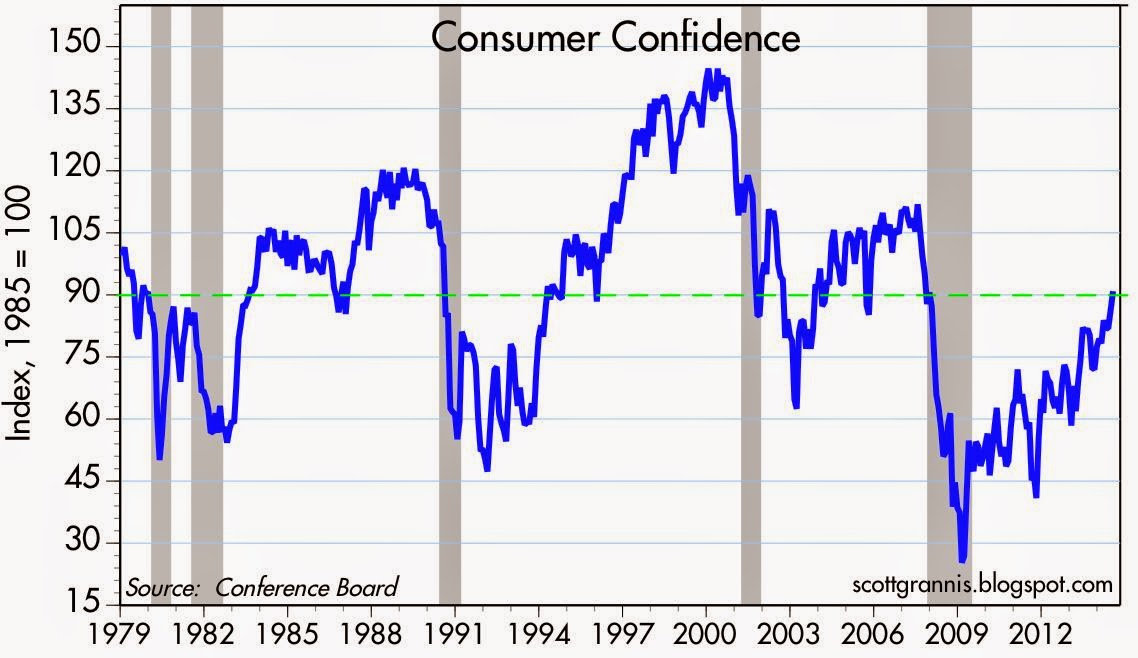Milton was all about freedom, a concept that to this day remains under siege from those who fail to understand how it works. Today, on the 102nd anniversary of Milton's birth, Mark Perry posted a wonderful collection of Milton's quotes. It's so good that I'm going to repeat it entirely, in the hope that it helps to keep the concept of freedom alive for the ages:
There is nothing as permanent as a temporary government program.
Inflation is always and everywhere a monetary phenomenon.
Inflation is caused by too much money chasing after too few goods.
Sloppy writing reflects sloppy thinking.
All learning is ultimately self-learning.
I’m in favor of legalizing drugs. According to my values system, if people want to kill themselves, they have every right to do so. Most of the harm that comes from drugs is because they are illegal.
Nobody spends somebody else’s money as carefully as he spends his own. Nobody uses somebody else’s resources as carefully as he uses his own. So if you want efficiency and effectiveness, if you want knowledge to be properly utilized, you have to do it through the means of private property.
The government solution to a problem is usually as bad as the problem.
The Great Depression, like most other periods of severe unemployment, was produced by government mismanagement rather than by any inherent instability of the private economy.
The high rate of unemployment among teenagers, and especially black teenagers, is both a scandal and a serious source of social unrest. Yet it is largely a result of minimum wage laws. We regard the minimum wage law as one of the most, if not the most, anti-black laws on the statute books.
Industrial progress, mechanical improvement, all of the great wonders of the modern era have meant relatively little to the wealthy. The rich in Ancient Greece would have benefited hardly at all from modern plumbing: running servants replaced running water. Television and radio? The patricians of Rome could enjoy the leading musicians and actors in their home, could have the leading actors as domestic retainers. Ready-to-wear clothing, supermarkets — all these and many other modern developments would have added little to their life. The great achievements of Western capitalism have redounded primarily to the benefit of the ordinary person. These achievements have made available to the masses conveniences and amenities that were previously the exclusive prerogative of the rich and powerful.
President Kennedy said, “Ask not what your country can do for you — ask what you can do for your country.”… Neither half of that statement expresses a relation between the citizen and his government that is worthy of the ideals of free men in a free society. “What your country can do for you” implies that the government is the patron, the citizen the ward. “What you can do for your country” assumes that the government is the master, the citizen the servant.
On the difference between public vs. private education: “Try talking French with someone who studied it in public school. Then with a Berlitz graduate.”
‘Fair’ is in the eye of the beholder; ‘free’ is the verdict of the market. The word ‘free’ is used three times in the Declaration of Independence and once in the First Amendment to the Constitution, along with ‘freedom.’ The word ‘fair’ is not used in either of our founding documents.
What most people really object to when they object to a free market is that it is so hard for them to shape it to their own will. The market gives people what the people want instead of what other people think they ought to want. At the bottom of many criticisms of the market economy is really lack of belief in freedom itself.
The great achievements of civilization have not come from government bureaus. Einstein didn’t construct his theory under order from a bureaucrat. Henry Ford didn’t revolutionize the automobile industry that way. In the only cases in which the masses have escaped from grinding poverty, the only cases in recorded history are where they’ve had capitalism and largely free trade. If you want to know where the masses are worst off, it’s exactly in the kinds of societies that depart from that, so that the record of history is absolutely crystal clear: that there is no alternative way so far discovered of improving the lot of the ordinary people that can hold a candle to the productive activities that are unleashed by a free enterprise system.
The problem of social organization is how to set up an arrangement under which greed will do the least harm; capitalism is that kind of a system.
With some notable exceptions, businessmen favor free enterprise in general but are opposed to it when it comes to themselves.
The case for prohibiting drugs is exactly as strong and as weak as the case for prohibiting people from overeating.
The government has no more right to tell me what goes into my mouth [including illegal drugs] than it has to tell me what comes out of my mouth.
For more Milton Friedman quotes, see this list here at “The Collected Works of Milton Friedman” project at Stanford University’s Hoover Institution.






















































